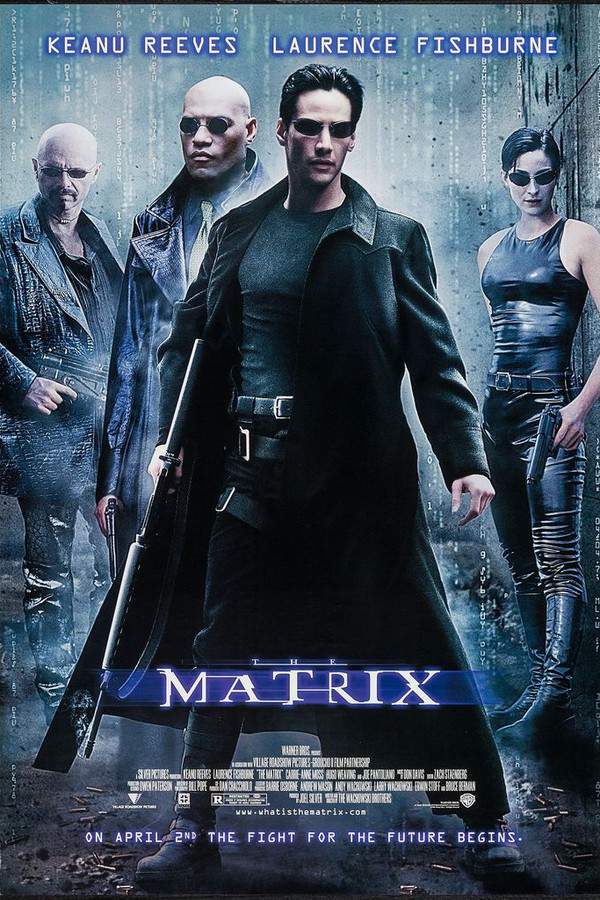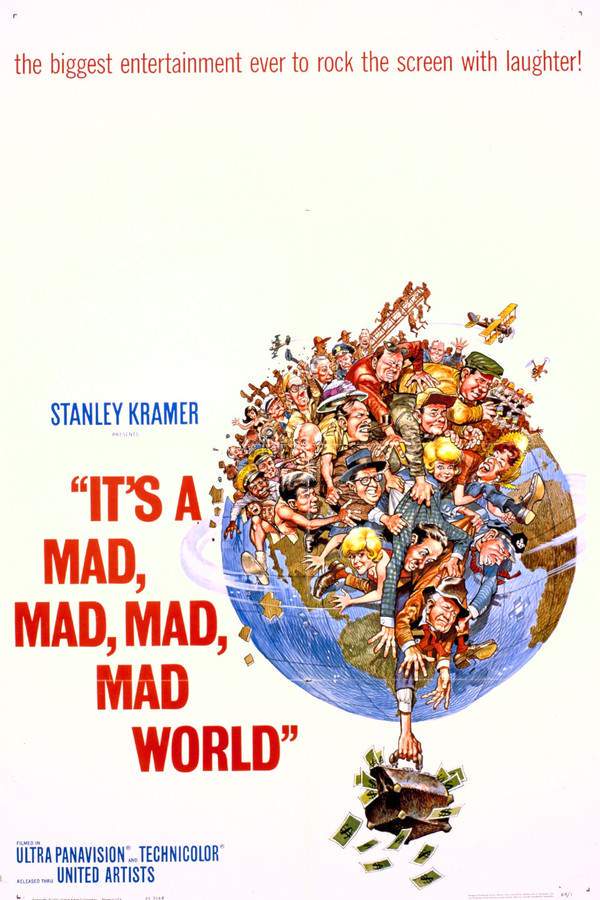What's After the Blog?
Genres • Cinema
The Art of Mixing Genres in Modern Cinema
Discover how mixing genres in modern cinema challenges traditional storytelling and enriches audience experiences, revealing the creativity behind today's most compelling films.
December 25, 2024

Movies mentioned in this article
The Art of Mixing Genres in Modern Cinema
Explore the innovative world of modern cinema where boundaries are blurred, and genres are mixed, creating unforgettable cinematic experiences. Delve deeper into this trend with more fascinating insights on our blog at ATM’s Blog.
Introduction
In the ever-evolving landscape of modern cinema, the art of mixing genres has emerged as a dynamic storytelling strategy, challenging traditional boundaries and offering audiences complex, multifaceted experiences. This trend reflects filmmakers’ desires to push creative limits, explore new narrative possibilities, and engage viewers on multiple levels. Genre mixing, or genre hybridity, involves combining elements of two or more genres—such as horror and comedy, sci-fi and western, or drama and fantasy—to create films that defy easy categorization and offer a unique blend of tones, styles, and themes.
The appeal of mixed-genre films lies in their ability to surprise and engage audiences in unexpected ways. By blending genres, filmmakers can juxtapose contrasting elements, like humor and terror in Shaun of the Dead or action and introspection in Logan, creating rich, nuanced narratives that appeal to diverse tastes and interests. These films often resonate with viewers because they reflect the complexity of real life, where emotions and experiences aren’t confined to single categories but intermingle and influence each other.
Historical Context
The mixing of genres in cinema is not a wholly new phenomenon, but its prevalence and sophistication have grown significantly in recent decades. Historically, films were generally marketed within specific genres to target particular audiences—westerns for action lovers, comedies for those seeking laughter, dramas for viewers drawn to emotional depth, and so on. However, as audiences became more sophisticated and filmmakers more ambitious, the desire to blend genres gained momentum. This evolution can be traced back to classics like The Good, The Bad, and The Ugly, which infused the western genre with elements of comedy and drama, and Blade Runner, a film noir that incorporates science fiction to explore themes of identity and humanity.
The transition towards genre-mixing reflects broader cultural and societal shifts. As global connectivity and cultural exchange have increased, so has the blending of artistic and narrative traditions in cinema. Filmmakers have drawn inspiration from a wider array of sources, leading to innovative combinations of genre elements. For instance, Pulp Fiction shattered conventional narrative and genre expectations by weaving together crime, drama, and dark comedy in a non-linear storyline. Similarly, The Matrix revolutionized the action genre by integrating profound philosophical questions with groundbreaking special effects, creating a film that is at once a thrilling action spectacle and a thoughtful exploration of reality and free will.
These developments have paved the way for a new era of cinema, where the mixing of genres is not just a novelty but a fundamental aspect of filmmaking. This trend challenges both creators and audiences to rethink what movies can be, encouraging exploration beyond the confines of traditional genres.
Why Mix Genres?
The decision to mix genres stems from a desire to explore narrative depth, character complexity, and thematic richness in ways that single-genre films may not fully allow. Filmmakers mix genres for various reasons, each aiming to enhance the storytelling experience and connect with audiences on multiple levels. For instance, mixing horror with comedy allows directors to temper intense scares with humor, making films like Shaun of the Dead not only terrifying but also immensely entertaining. On the other hand, blending science fiction with romance, as seen in Her, creates a poignant exploration of love and loneliness in the digital age.
This trend towards genre hybridity reflects a broader cultural shift towards embracing complexity and nuance. In a world where audiences are increasingly drawn to content that defies easy categorization, mixed-genre films offer a fresh perspective and a new way of understanding familiar themes. They provide a canvas for filmmakers to experiment with tone, pace, and narrative structure, resulting in films that are innovative, unpredictable, and deeply engaging. Moreover, by combining genres, filmmakers can appeal to wider audiences, drawing in viewers who might be interested in one genre but not another, thereby expanding the film’s appeal and reach.
How Genres Are Mixed
The process of mixing genres is both an art and a science, requiring a delicate balance to ensure that the film remains coherent and the blending of genres feels seamless. Scriptwriting plays a crucial role in this process, as it lays the foundation for how genres will be combined. A well-crafted script will weave together elements of different genres in a way that feels organic to the story, ensuring that each genre contributes to the development of the narrative and characters. For example, in Get Out, the script masterfully blends horror with social satire, using the conventions of each genre to amplify the other, creating a film that is both a chilling thriller and a sharp commentary on race relations.
Direction and cinematography also play vital roles in the mixing of genres. The director’s vision determines how elements from each genre will be presented and how they will interact to create a cohesive film. Cinematography, on the other hand, can enhance the blending of genres through visual style, using color, lighting, and composition to evoke the mood and tone of each genre. In Mad Max: Fury Road, the direction and cinematography work together to create a visual spectacle that merges action with dystopian elements, crafting a post-apocalyptic world that is both thrilling and thought-provoking.
Scoring and sound design further contribute to the mixing of genres by setting the emotional tone of the film and accentuating the fusion of genre elements. A score that skillfully combines musical styles can enhance the film’s ability to cross genre boundaries, as seen in The Grand Budapest Hotel, where the music complements the film’s unique blend of comedy, drama, and adventure.
In summary, mixing genres in cinema requires a thoughtful approach to scriptwriting, direction, cinematography, and scoring. When done successfully, it results in films that defy expectations, offering audiences new ways to experience and interpret stories.
Iconic Examples of Mixed-Genre Films
One of the clearest illustrations of the power and appeal of mixed-genre films is found in the variety and success of iconic examples that have left indelible marks on cinema history. Get Out (MOVIELINK), directed by Jordan Peele, is a prime example, masterfully blending horror with sharp social commentary to create a tense, thought-provoking narrative that challenges societal norms around race and privilege. The film uses horror elements to amplify its critique of racial tensions, making the social commentary all the more impactful. Similarly, _Shaun of the Dead (MOVIELINK) combines horror with comedy to create a uniquely entertaining film that both satirizes and pays homage to the zombie genre, all while exploring themes of friendship, love, and personal growth. _Mad Max: Fury Road is another exemplary mixed-genre film, merging action with dystopian science fiction to craft a visually stunning and emotionally gripping tale of survival, rebellion, and redemption in a post-apocalyptic wasteland. The film’s success lies in its ability to deliver high-octane action while also delving into deeper thematic content, exploring issues of power, freedom, and humanity.
These films demonstrate the limitless possibilities inherent in genre mixing, showing that the combination of different genres can result in works that are innovative, engaging, and reflective of complex human experiences. By crossing traditional genre boundaries, filmmakers are able to tell stories that resonate on multiple levels, appealing to a broad spectrum of viewers and enriching the cinematic landscape.
Benefits of Mixing Genres
The benefits of mixing genres in cinema are manifold, impacting both the creative process and the audience’s experience. For filmmakers, genre blending offers an expansive toolkit for storytelling, enabling them to draw on a wider range of narrative devices, themes, and stylistic elements. This creative freedom encourages innovation and experimentation, leading to films that are original and unpredictable. For audiences, mixed-genre films provide a richer, more engaging viewing experience. By combining elements from different genres, these films can offer the thrills of action, the introspection of drama, the laughter of comedy, and the suspense of thriller, all within a single narrative.
Moreover, mixed-genre films have the potential to reach a broader audience by appealing to fans of different genres. A film that incorporates elements of science fiction, romance, and comedy, for example, can attract viewers who might not be interested in a pure sci-fi or romance film. This cross-genre appeal can also foster a more diverse and inclusive cinematic culture, where viewers are encouraged to explore stories and styles they might otherwise overlook.
Additionally, genre-mixing can deepen the thematic richness of a film, allowing for a more nuanced exploration of complex subjects. By blending genres, filmmakers can approach serious topics with a light touch or add layers of meaning to entertaining narratives, creating films that are both enjoyable and thought-provoking.
In summary, the art of mixing genres in modern cinema offers significant benefits, fostering creativity and innovation in filmmaking while enriching the audience’s experience. This approach to storytelling reflects the complexity of the human experience, breaking down traditional barriers to explore the full spectrum of emotion and narrative possibility.
Challenges of Mixing Genres
While the mixing of genres offers a plethora of creative opportunities and audience engagement, it also presents unique challenges that filmmakers must navigate. One primary obstacle is maintaining a coherent tone throughout the film. Balancing elements from disparate genres, such as horror and comedy or sci-fi and romance, requires a delicate touch to prevent the film from feeling disjointed or erratic. Achieving this balance often demands a deep understanding of the conventions and expectations of each genre being combined, as well as a clear vision for the film’s overall tone and message.
Another challenge lies in marketing mixed-genre films. Traditional marketing strategies tend to categorize films into single genres to target specific audience segments. Mixed-genre films, however, defy easy classification, making it difficult for marketing campaigns to convey the film’s multifaceted nature. This can lead to mismatches between audience expectations and the actual film experience, potentially affecting box office performance and viewer satisfaction. For instance, a film that blends elements of action and drama might be marketed primarily as an action movie, disappointing viewers seeking non-stop thrills when they encounter its more contemplative, dramatic moments.
Moreover, mixed-genre films risk alienating audiences who prefer pure genre experiences. Some viewers might not appreciate the intrusion of comedic elements into a horror film, for example, finding that it diminishes the tension and scares they seek. Filmmakers must therefore tread carefully, ensuring that their genre-blending enriches the film without undermining the elements that fans of each genre love.
”What makes a mixed-genre film successful?”
The success of a mixed-genre film hinges on several key factors. Foremost among these is the seamless integration of genre elements in a way that serves the story. Successful mixed-genre films use their blend of genres not just for novelty, but to deepen the narrative, enhance character development, and elevate the thematic resonance of the story. For example, Get Out uses horror not just to scare but to highlight the real-life horrors of racism, making the film’s social commentary all the more powerful.
Another critical factor is the film’s ability to balance and respect the conventions of the genres it combines. This doesn’t mean strictly adhering to genre norms, but rather weaving them together in a manner that feels both fresh and familiar. This balance ensures that the film can appeal to fans of each genre while still offering something new and engaging.
Finally, a successful mixed-genre film often features strong, compelling characters who can navigate the film’s varied tones and themes. Characters act as the audience’s anchor, helping to maintain coherence and emotional investment regardless of the genre elements at play. In The Princess Bride , for example, it’s the memorable characters and their relationships that tie together the film’s blend of adventure, romance, and comedy, making it a beloved classic across different audience demographics.
In conclusion, the success of mixed-genre films lies in their ability to tell engaging, multifaceted stories that are enhanced, rather than encumbered, by their genre-blending. These films not only entertain but also enrich the cinematic landscape, offering new ways for audiences to experience and interpret the art of filmmaking.
”How do mixed-genre films influence audience expectations?”
Mixed-genre films significantly impact audience expectations by broadening their cinematic palate and challenging preconceived notions about what movies can or should be. These films encourage viewers to expect more from cinema—more complexity, more innovation, and more blending of emotional and intellectual experiences. For instance, audiences who embrace the dark comedy and horror blend in The Cabin in the Woods learn to anticipate films that offer commentary on genre conventions while still delivering on those genres’ foundational promises. This shift in expectation fosters a more open-minded and diverse audience base, ready to explore films beyond traditional genre boundaries.
Moreover, mixed-genre films set a higher bar for creativity and originality in filmmaking. Audiences exposed to successful genre hybrids come to appreciate the nuanced storytelling and layered character development such films offer. This appreciation can lead to a demand for more films that defy easy categorization, pushing the industry toward greater innovation. Films like Eternal Sunshine of the Spotless Mind , which combines elements of science fiction, romance, and psychological drama, exemplify how filmmakers can explore complex themes like memory, identity, and love in unconventional ways, resonating deeply with audiences seeking profound cinematic experiences.
Mixed Genres in ATM’s Movie Database
Within ATM’s extensive movie database, users have the unique opportunity to explore the world of mixed-genre films with ease. Our platform not only highlights whether a movie features end credit scenes but also delves into the rich tapestry of genre blending that defines many of today’s most compelling cinematic works. By providing detailed descriptions, ratings, and summaries, ATM helps users discover and appreciate the artistry behind films that transcend traditional genre classifications.
This focus on mixed-genre films allows our users to expand their movie-watching horizons, exploring new combinations of genres that might previously have been outside their comfort zones. Whether it’s the surreal blend of comedy and drama found in Birdman (MOVIELINK) or the action-packed, yet deeply emotional superhero narratives like _Logan , ATM serves as a gateway to a broader understanding and appreciation of modern cinema’s evolving landscape.
In conclusion, mixed-genre films play a pivotal role in shaping audience expectations and fostering a culture of cinematic exploration. Through platforms like ATM, movie enthusiasts are empowered to delve deeper into the nuanced world of genre blending, discovering films that challenge, entertain, and inspire. As the lines between genres continue to blur, the possibilities for innovative storytelling and audience engagement are boundless, heralding an exciting future for the art of cinema.
Continue reading

What's After the Movie?
Not sure whether to stay after the credits? Find out!
Explore Our Movie Platform
New Movie Releases (2025)
Famous Movie Actors
Top Film Production Studios
Movie Plot Summaries & Endings
Major Movie Awards & Winners
Best Concert Films & Music Documentaries
Movie Collections and Curated Lists
© 2025 What's After the Movie. All rights reserved.

















